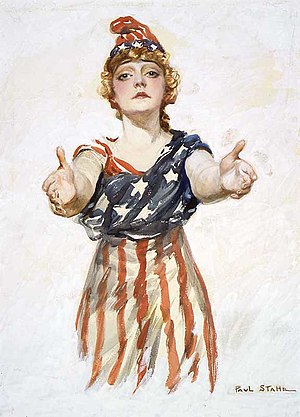
Yesterday was so-called Columbus Day , when many countries in the New World and elsewhere celebrated the anniversary of Christopher Columbus’ arrival in the Americas, which happened on October 12, 1492. The landing is celebrated as Columbus Day in the United States, as Día de la Raza (“Day of the Race”) in many countries in Latin America, as Discovery Day in the Bahamas, as Día de la Hispanidad and Fiesta Nacional in Spain, as Día del Respeto a la Diversidad Cultural (Day of Respect for Cultural Diversity) in Argentina, as Día de las Américas (Day of the Americas) in Belize and Uruguay and as Giornata Nazionale di Cristopher Columbus or Festa Nazionale di Cristopher Columbus in Italy and in the Little Italys around the world. These holidays have been celebrated unofficially since the late 18th century, and officially in various areas since the early 20th century. But the holiday has met with a long history of opposition since Columbus actually brought slavery, exploitation and disease to the indigenous Indians, so that several regions in the United States either refuse to observe it or celebrate a different event entirely.

“They would cut an [American] Indian’s hands and leave them dangling by a shred of skin … [and] they would test their swords and their manly strength on captured [American] Indians and place bets on the slicing off of heads or cutting of bodies in half with one blow.” From Bartolomé dela Casas’s written account Brevisima relatión de la destrucción de las Indias, 1552.
But, despite this, Columbia did become a historical and poetic name for British North America, before being used as one of the female personification names of the present United States . It has inspired the names of many persons, places, objects, institutions, and companies; e.g., Columbia University, the District of Columbia (the national capital), and the Columbia River. And, of course, there is still loyal British Columbia in Canada. Columbia was only largely displaced as the female symbol of the U.S. by the Statue of Liberty around 1920.

Personified Columbia in US flag, gown and Phrigian cap, which signifies freedom and the pursuit of liberty, from a First World War patriotic poster.
This 1872 painting depicts Columbia as the “Spirit of the Frontier”, carrying telegraph lines across the Western frontier to fulfill Manifest Destiny.

Columbia wearing a warship bearing the words “World Power” as her “Easter bonnet” (cover of Puck, April 6, 1901).
The name Columbia for “America” first appeared in 1738 in the weekly publication of the debates of the British Parliament in Edward Cave’s The Gentleman’s Magazine. Publication of Parliamentary debates was technically illegal, so the debates were issued under the thin disguise of Reports of the Debates of the Senate of Lilliput, and fictitious names were used for most individuals and placenames found in the record. Most of these were transparent anagrams or similar distortions of the real names; some few were taken directly from our own Jonathan Swift’s Gulliver’s Travels; and a few others were classical or neoclassical in style. Such were Ierne for Ireland, from which we get Hibernia, Iberia for Spain, Noveborac for New York (from Eboracum, the Roman name for Brigantine York), and Columbia for America—at the time used in the sense of “European colonies in the New World”. Such iconography usually personified America in the form of an Indian queen or Native American princess. Yet the Indians were often the most loyal of the British during the First American Civil War (“American Revolutionary War”), and the Mohawks still are in Canada, where they survived their ethnic cleansing from the Mohawk Valley in New York.
The name appears to have been coined by Samuel Johnson , thought to have been the author of an introductory essay (in which “Columbia” already appears) which explained the conceit of substituting “Lilliputian” for English names; Johnson also wrote down the Debates from 1740 to 1743. The name continued to appear in The Gentleman’s Magazine until December 1746. Columbia is an obvious calque on America, substituting the base of the surname of the invader Christopher Columbus for the base of the given name of the somewhat less well-known Americus Vespucius. As the debates of Parliament, many of whose decisions directly affected the colonies, were distributed and closely followed in the British colonies in America, the name “Columbia” would have been familiar to the United States’ founding generation.
In the second half of the 18th century, the British colonists in America were beginning to acquire a sense of having an identity distinct from that of their cousins on the other side of the ocean. At that time, it was common for European countries to use a Latin name in formal or poetical contexts to confer an additional degree of respectability on the country concerned. In many cases, these nations were personified as pseudo-classical goddesses named with these Latin names. The use of “Columbia” was, in effect, the closest which the Americans, located in a continent unknown to and unnamed by the Romans, could come to emulating this custom.
By the time of the First American Civil War, the name Columbia had lost the comic overtone of its “Lilliputian” origins and had become established as an alternative, or poetic name for America. While the name America is necessarily scanned with four syllables, according to 18th-century rules of English versification Columbia was normally scanned with three, which is often more metrically convenient. The name appears, for instance, in a collection of complimentary poems written by Harvard graduates in 1761, on the occasion of the marriage and coronation of King George III.
|




